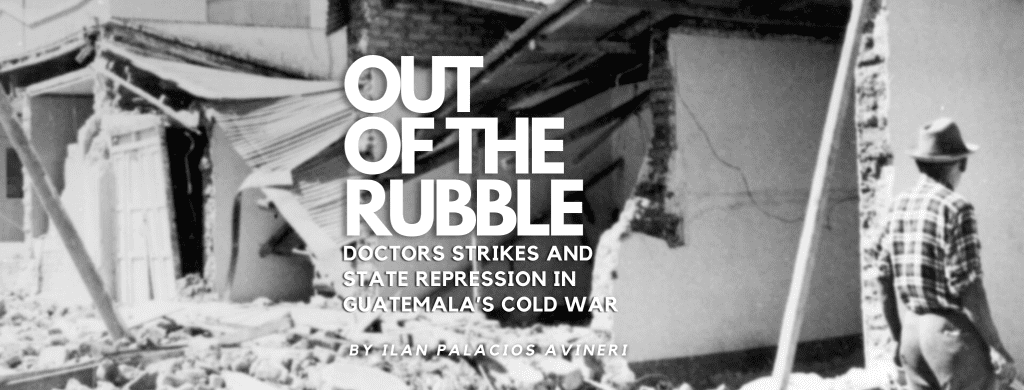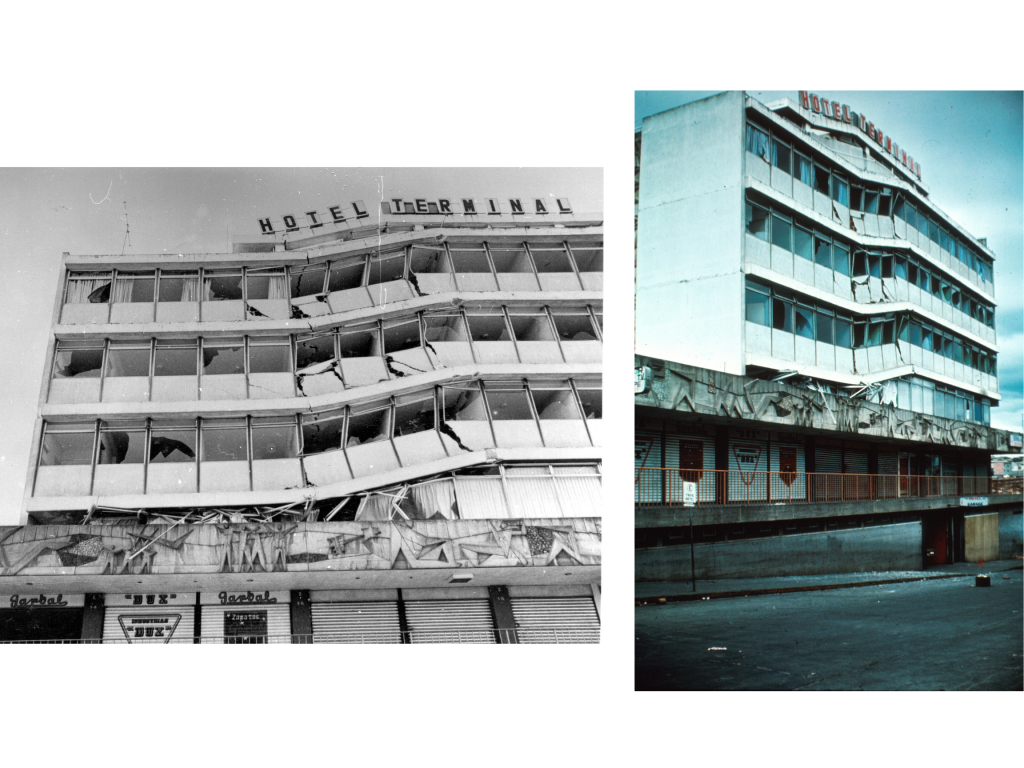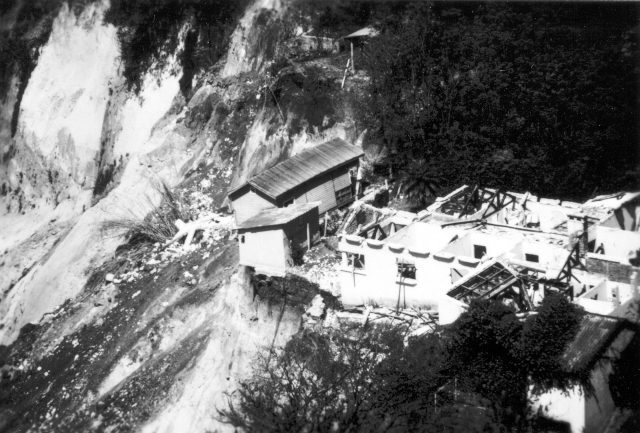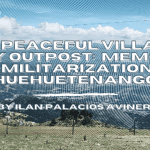
Medical professionals are often viewed as apolitical, but what happens when they come to challenge a government? On February 4th, 1976, a cataclysmic earthquake brought an embattled Guatemala to its knees. Amidst a raging civil war, the terremoto (earthquake) razed countless houses and killed roughly 21,000 people in just 39 seconds. Thousands more emerged from the rubble with serious injuries and over a million, disproportionately Mayas from rural regions, were left homeless.
As Kjell Laugerud García’s right-wing regime scrambled to rebuild critical infrastructure, the country’s crippled hospitals became inundated with a flood of patients. In the crisis’s aftermath, doctors and nurses grew increasingly embittered by the abysmal state of public hospitals and began to agitate for more rights.

In August of 1976, public health care workers in Amatitlán organized a strike to demand salary increases along with better working conditions. These putatively middle-class physicians also insisted that their fellow employees, previously dismissed by the Public Health Ministry, be immediately restored to their posts. Contemporary news reports revealed that the government feared the prospect of solidarity between these urban workers and their rural counterparts. Such a history showcases how natural disasters can spur the middle-class into activism and threaten the established order.
As the health workers’ strike stretched into its third week, Agencia EFE published a lengthy speech by President Laugerud García that called for an immediate end to the protests. The dictator excoriated his country’s health care workers not only for violating Guatemalan laws prohibiting public employees from striking, but for engaging in an “immoral” movement. Invoking the Hippocratic oath, he lambasted the doctors and nurses for abandoning their “obligation to look after the sick” following the quake. He then pitted middle-class physicians and nurses against the peasant class, arguing that “the poor are the ones who suffer the most…who have been deprived of medical attention.”
After shaming the hospital employees, the caudillo (leader) threatened violence similar to that being deployed against leftist guerrillas in the countryside. “I am responsible for the health of all 6 million Guatemalans…,” Laugerud declared emphatically, “and [I] will not hesitate to act as drastically as necessary.” Notably, such warnings were a deliberate response not only to the physicians, but to growing protests among others “not involved in the hospital dispute.”

This conflict between the government and the health care workers persisted as the nation struggled to recover from the earthquake. Laugerud García faced another doctor’s strike in 1978, this time among physicians at the Instituto Guatemalteco de Seguridad Social (IGSS). In early March, Agencia EFE described how the institute’s doctors union ordered a strike demanding higher wages. In a public statement, the IGSS lamented how their past pleas for better working conditions were ignored following the historic temblor. Like the health care employees in Amatitlán, the outgoing Laugerud García government expressed outrage with the growing demands for improved economic conditions among middle-class workers.
As the ongoing civil war heated up, subsequent leaders began to act aggressively on their predecessor’s threats. In June of 1980, for example, two medical students were shot down by machine guns in Guatemala City’s Zona 11. Among them, Jose Leon Díaz, the son of former secretary of the San Carlos University, “died instantly” at the scene. In a similar vein, the Guatemalan press reported on the extrajudicial killing of a doctor by the nation’s armed forces on October 31st, 1981. This murder coincided with 14 killings of leftist guerrillas and 1 university professor all of which the Fernando Romeo Lucas García regime characterized as “subversives.” This grouping revealed the government’s mounting fear of medical professionals becoming radicalized enemies of the state.
And as successive strongmen accelerated the execution of doctors and nurses, the insurgent Organización del Pueblo en Armas (ORPA) stood in solidarity with the hospital employees. In a statement published in the Prensa Latina, the guerrillas lambasted President Efraín Ríos Montt for killing physicians opposed to his regime. They questioned if it was such a crime for professors, peasants, and doctors to liberate themselves “from hunger, misery, and neglect.” In so doing, the guerrillas cast health care professionals as fellow workers and valued comrades in the fight against a right-wing dictatorship.

This history remains strikingly relevant in our present moment. Amidst a new natural disaster, the COVID-19 pandemic, medical professionals are challenging the Guatemalan government once more. On July 22nd, 2020, for example, heads of Guatemala’s Roosevelt Hospital demanded to meet with President Alejandro Giammattei to discuss the poor conditions in the nation’s hospitals. The hospital’s Chief of Pathology, Luís Chávez, lamented the Health Ministry’s indifference towards medical professionals combating the coronavirus in dilapidated buildings. His colleague, Miguel Angel Siguantay, went even further. Beyond restating his hospital’s commitment to “the good of the patients,” the doctor threatened “other types of measures” if the government ignored ongoing requests for aid. Echoing doctors from Guatemala’s past, the physician stated firmly that his fellow workers would no longer be neglected by their country.
Although this long history of health care employees’ activism demands further study, these press reports elucidate much about Guatemalan politics over the past half-century. For one, right-wing governments during the Civil War grew disturbed not only by insurgent guerrilla victories, but by demands for better pay among hospital workers. The medical professionals’ pressure also prompted leaders to categorize them in similar ways as their armed counterparts.
Yet, these newspaper articles also suggest that Guatemalan doctors and nurses may be beginning to conceptualize themselves as working people, forced to contend with unjust labor conditions like their rural counterparts. This development echoes Eyal Weinberg’s findings on Brazilian doctors, who similarly advocated for workers’ rights amidst economic downturn and social upheaval during the 1970s and 80s. Taken together, such findings reveal how natural disasters and economic unrest can swiftly spur the middle-classes into activism.
Further Reading:
- Flores, Pia. “Médicos exigen diálogo público. Giammattei y ministra Flores, no se comprometen.” Nomada, July 22, 2020.
- Levenson, Deborah. “Reactions to Trauma: The 1976 Earthquake in Guatemala.” International Labor and Working Class History 62, no. 62 (October 2002): 60–68
- Weinberg, Eyal. “‘With Colleagues Like That, Who Needs Enemies?’: Doctors and Repression Under Military and Post-Authoritarian Brazil.” The Americas (Washington. 1944) 76, no. 3 (July 2019): 467–505.



